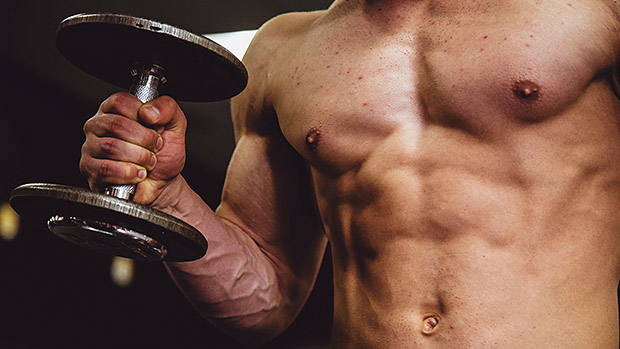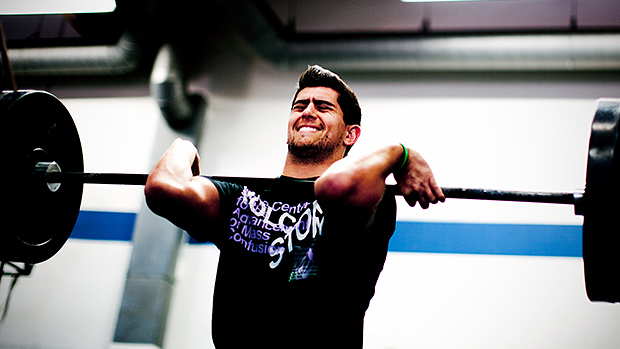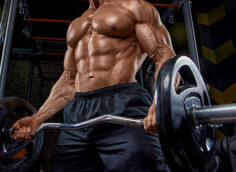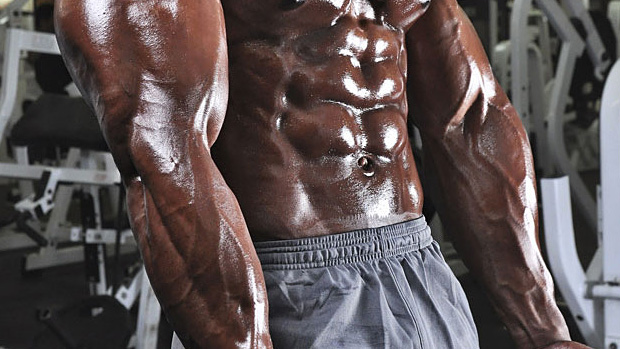Lead Photo Credit: Alora Grffiths
Bicep curls work. They're a staple in any gym bro's routine and they're not going away anytime soon. But it seems like some people go to the gym just to watch themselves do curls in the mirror. So to get the most out of your curls, make sure you're not sabotaging yourself by making these mistakes.
Unless you're juicing, having a day solely dedicated to such a small body part is a surefire way to get peashooters instead of pythons. Many different training splits work well, like upper/lower, push/pull, or whole body. But the one that doesn't (or at least not as well if you're natty) is a single muscle group a day.
Generally, you should train your largest muscle groups first, followed by your smaller muscle groups. Your biceps are a smaller muscle group and should be thought of as accessory work after you've hit a bigger lift.
Big compound movements such as squats, deadlifts, pull-ups and presses all elevate your testosterone and growth hormone levels to a greater extent when training, which will lead to larger biceps. Having a day dedicated just to your arms means that you'll miss out on an opportunity for growth.
One of the most common mistakes when doing dumbbell curls is flaring the elbows out to the side. This could lead to shoulder issues because the head of the humerus is almost guaranteed to drop excessively forward.
But the greater issue here is that you're cheating yourself out of gains because the movement isn't working your entire bicep. Flaring your elbow means you're compensating by over-relying on your traps or lower back... or you're excessively swinging the dumbbell. Here's what this looks like:
To fix this, think of trying to "scrape" the side of your body with your elbow as you curl. This will keep your elbow tight to the body and make sure your bicep has to do the work the entire time without over-relying on other muscles.
While you shouldn't flair your elbows when curling, that doesn't mean you should use strict form ALL the time. In fact, those who never cheat their curls are generally those with the smallest biceps at the gym. Cheat curls are not only a fun way to bro out, they're also effective for inducing growth. There is, however, an effective and ineffective way to cheat.
If you're getting a bit of a swing to start the curl towards the end of your set, you're doing an effective cheat curl. This is actually a good way to relieve some excess tension at the distal portion (lower part) of your bicep tendon. As long as you're not excessively arching your back or are letting the head of your humerus drop forward, you should be just fine. But if you have to cheat from the first rep, use a lighter weight.
If you're doing your 3 sets of 10 with the same weight 2-3 times a week, odds are you're not going to make any progress past your initial beginner gains.
You have three primary elbow flexors: your biceps brachaii, your brachioradialis, and your brachialis.

Although you work all three doing any exercise that requires elbow flexion, you can put more emphasis on each one by changing where your palm faces when you curl.
Here are three different variations that'll help you emphasize each muscle. Keep your elbows tight to the body to get the most bang for your buck.
Rotating Biceps Curl
The elbow flexor stressed most here is the bicep brachii. Allowing your palm to start off neutral and rotating it upward will help take excessive strain off and allow you to get more torque which will lead to greater muscle activation.
Hammer Curl
These put more emphasis on your brachioradialis. Begin and end with your palms neutral.
Reverse Curl
These emphasize your brachialis as well as wrist extensors. They can also be used as an accessory exercise to help you stabilize the bar when doing heavy bench presses since they require so much grip strength and stabilization through the wrist extensors.





